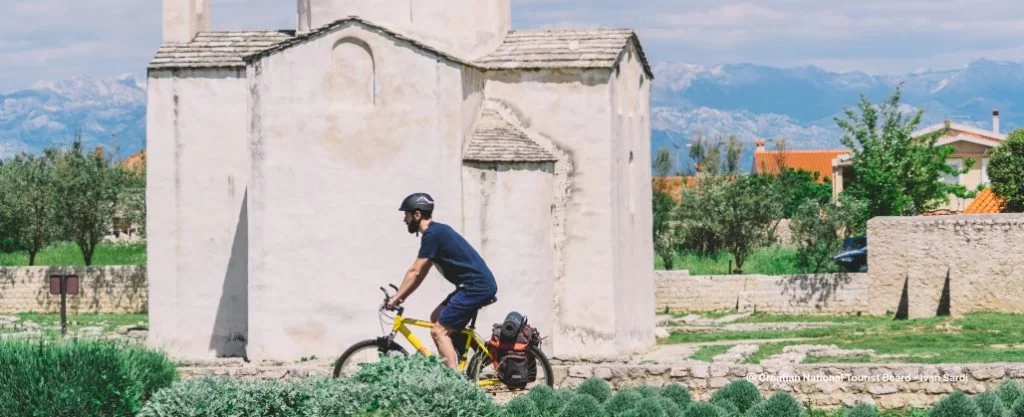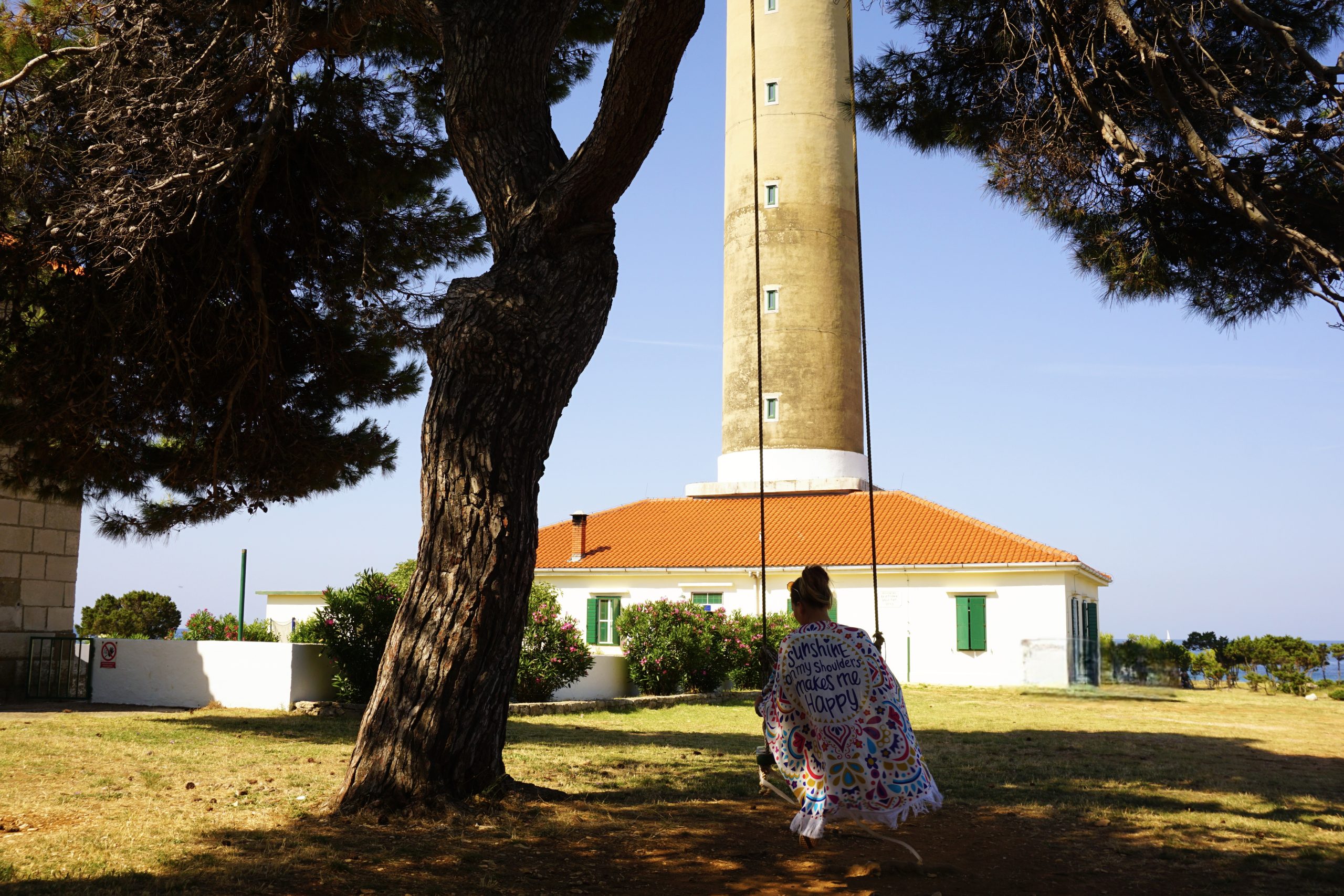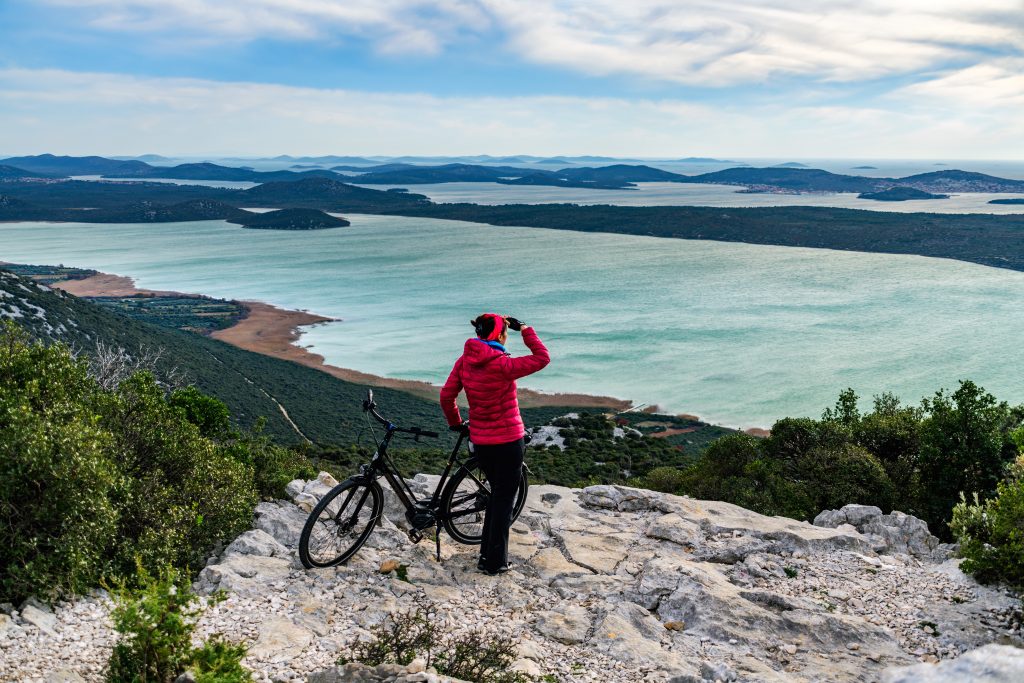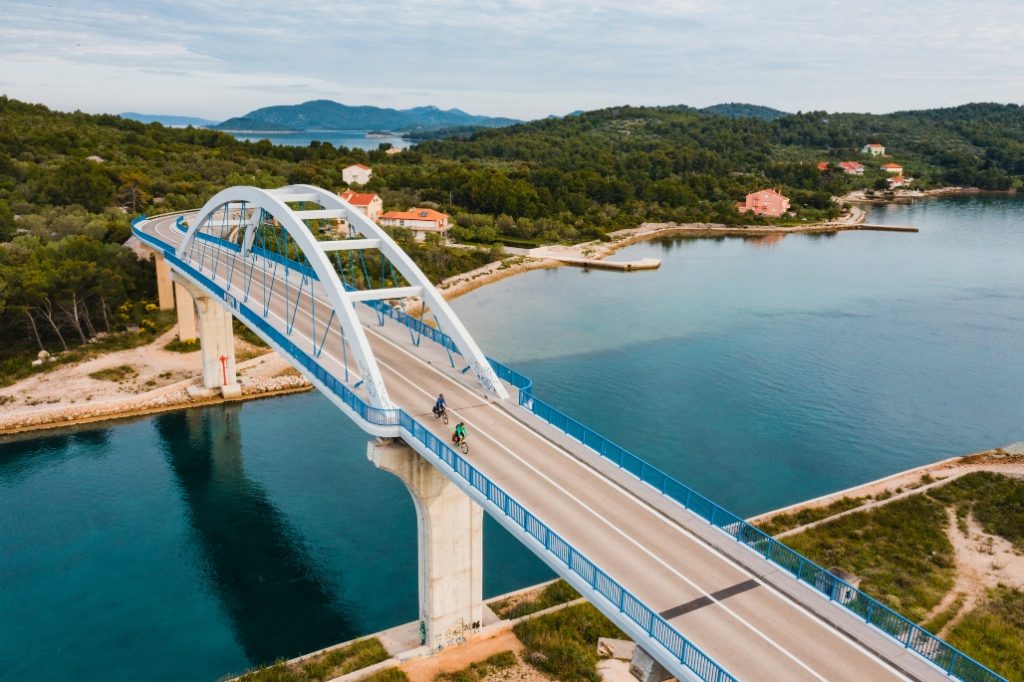
Few places in Europe combine rugged coastline, serene islands, ancient towns, and wild nature into a single cycling route like Dalmatia. The Trans Dalmatia Bike Trail, offered by ZZUUM, invites cyclists to a multi-day expedition through this beautiful Croatian region. More than just a tour, it’s an immersive journey — of history, nature, and the winding roads that connect them. Whether you’re an avid cyclist with panniers, an e-bike adventurer, or someone who prefers to ride and linger, this trail has something to offer.
What Is the Trans Dalmatia Bike Trail?
The Trans Dalmatia Bike Trail is a circular, multi-day route that circumnavigates the Zadar region, stitching together parts of the mainland and several islands.
- Total distance: ~340 km
- Elevation gain: about 3,532 meters – moderate climbing is involved
- Physical/technical difficulty: moderate and easy-to-moderate, respectively. It’s not “mountain bike hardcore”, but you will need stamina and be comfortable with varying terrain.
The trail can be completed completely self-guided, with flexibility built in via GPX/RWGPS tracks and optional navigation packs.
The Route and Itinerary: What to Expect Day by Day
Here’s the standard 7-day schedule, with optional variations. One of the strengths of the trail is that it is modular, letting you linger, take side-loops, or alter according to weather or mood.
| Day | Route | Highlights & Notes |
| Day 1 | Zadar → Nin & surroundings → Zadar | A gentle start: you’ll taste both coastal views and salt-fields. Nin is small and historic, with salt pans and noble history. |
| Day 2 | Zadar → ferry to Ugljan → across Ugljan to Muline | Island riding begins: ferry crossings, quiet roads, views of the Adriatic. Expect charm and a slower pace. |
| Day 3 | Ugljan → Pašman or via ferry to Biograd | More island hopping, perhaps quieter roads, then a transition back to the mainland if choosing Biograd. |
| Day 4 | From Pašman or Biograd → Nature Park Vrana → Biograd | Inland beauty: lakes, birdlife, traditional Dalmatian countryside. An opportunity to rest legs if needed. |
| Day 5 | Biograd → inner-land route to Zadar ferry → Ferry to Dugi Otok (Brbinj) → Božava → Veli Rat | Longer day, some ferry/boat transfers, but spectacular island scenery. Veli rat’s lighthouse is a highlight. |
| Day 6 | Veli rat → Sali (on Dugi otok) | Deep island immersion: fishing villages, bays, possibly remote roads. Great chance to slow down even more. |
| Day 7 | Sali → Telašćica Nature Park → Sali → Boat / return to Zadar | Finale with dramatic coastal landscapes, cliffs, hidden coves. A fitting end. |
Highlights & Natural Wonders Along the Way
Several stops along the trail stand out not just for scenery, but because they offer what makes Dalmatia unique: nature, quiet beauty, and cultural depth.
- Telašćica Nature Park: Cliffs dropping dramatically into the sea, hidden coves, a salt lake inside the park, and an overall sense of wild beauty.
- Veli rat Lighthouse (on Dugi otok): A historic maritime landmark, offering sweeping views over sea and coast. Great for sunrise or sunset photography.
- Vrana Lake Nature Park: Inland, much quieter, home to birdlife, marshes, and traditional Croatian rural landscapes. A contrast to the islands and coast.
- Salt fields & historic Nin: Nin is small but packed with history, and the salt fields near it create ethereal landscapes (especially around sunrise/sunset).

Logistics: Gear, Navigation, Accommodation
Riding a 340-km loop with over 3,500 m of elevation involves planning. Here are what you should think about.
Navigation
You can purchase:
- Basic Navigation Pack: GPX tracks + waypoints. You bring your own device (Garmin, Wahoo, etc.). It’s more “open world”, less hand-holding.
- Full Navigation Pack (RWGPS): More features — interactive maps, offline mode, turn-by-turn voice navigation, points of interest, etc. Especially useful if you prefer more structure.
Equipment & Bike Options
- Trekking/touring bikes are available: aluminium frame, Schwalbe “Road Cruiser” 47c tyres, good brakes, panniers. Enough for most paved roads and mild gravel.
- E-bikes are offered as well: they help greatly with climbs and make some of the island stretches much more accessible.
- Extras: bags/panniers included, phone holder available, etc.
Accommodation & Flexibility
One of the beauties of this trail is the flexibility:
- You can stay in hotels or private accommodations, or use camping sites.
- You decide how long to stay in certain places. Want to spend two nights on Dugi Otok? You can. Prefer to skip Pašman Island? You can tweak it. The route is modular.
Costs & Other Details
- Navigation packs cost: €12 (basic) and €18 (full)
- Renting a touring bike: €16-20 per day, depending on the period, including pannier bags.
- Electric bike: €25-35/day, depending on the period, including pannier bags.
Some terms: valid ID required, cancellation/payment conditions apply. Also, note that the full RWGPS navigation pack isn’t available until January 2026.
Who Is This Trail For?
This is not an ultra-hard mountain bike route, but it’s not a leisurely Sunday ride either. The Trans Dalmatia Trail is best suited to:
- Moderate to strong cyclists who are used to multi-day rides. Your legs will feel it, especially on island climbs.
- People comfortable navigating or managing routes, especially if opting for the “basic pack.” But even if you use full aids, you’ll still need map sense, weather sense, etc.
- Cyclists who like to mix in nature, culture, and a relaxed pace. If your goal is purely speed or mileage, you might feel frustrated by ferries, boat crossings, or towns where you want to stay longer.
- Adventurers who don’t mind the occasional logistical detail — ferry schedules, accommodation variety (sometimes remote), managing food & water in less populated stretches.

Tips for Getting the Most Out of Trans Dalmatia
Here are some on-the-ground suggestions to ensure the experience is as good as possible.
- Plan according to ferry/boat schedules
Some parts of the route depend on ferries or boats. It’s wise to check schedules ahead of time so you don’t get stuck waiting, especially during the off-season or on less frequent lines. - Travel light but prepared
Even if you are staying in hotels most nights, bring essentials: lightweight rain gear, layers (weather can shift near sea and inland), good sun protection, spare tubes, etc. - Pace yourself
The route is long, and some island segments are more remote. Don’t overdo the early days; allow time for enjoying views, swimming, and exploring towns. - Watch for quiet roads / off-peak times
Depending on the season, traffic on certain coastal roads or ferries can ramp up. Early mornings or shoulder season will be more peaceful. - Food & water strategy
On islands and remote stretches, services (cafés, shops) may be sparse. Stock up when you can, carry enough water, and maybe carry some snacks. - Stay flexible
Weather, fatigue, or desire to linger will likely make you want to change plans. The trail is designed for that. Use the modularity to your advantage. - Cultural stops
Don’t miss out on small towns: Nin, Muline, Pašman, Biograd, and villages on Dugi otok. Often, a quieter pace in these places yields the richest experiences: local food, unspoiled beaches, and unstructured time.

Why the Trans Dalmatia Trail Stands Out
What elevates this trail beyond a “nice bike trip” are some of the following qualities:
- Diversity of landscapes: Sea views, salt pans, islands, inland nature parks, rural agricultural areas. You don’t just ride coast-to-coast; you ride sea, island, and land.
- Island and mainland mix: The route connects Zadar with Ugljan, Pašman, and Dugi otok — each island with its character, pace, and scenery.
- Flexibility: Self-guided options, varied accommodation, ability to extend or shorten stages. Not everything is rigid.
- Support and infrastructure: Bike rental, gear, navigation packs, well-maintained bikes, and helpful local staff. These make a big difference when you’re far from home. The reviews reflect that quality.
Possible Challenges & What to Be Mindful Of
No trail is perfect, and Trans Dalmatia has its challenges. Being aware will help you decide if it’s right for you.
- Weather: Summers can be very hot, especially inland. Islands may have strong sun and wind. Off-season may bring rain or fewer services.
- Ferries / Boat crossings dependency: If you miss a ferry, you can lose time or end up needing to change routes.
- Remote stretches: On islands or in rural interiors, there may be long stretches without shops or services. You’ll want to carry basics.
- Logistics/gear weight: If overpacked, panniers + elevation + heat can make things much harder.
- Navigation in some areas: Even with full packs, some roads or paths may not be well signed. Having GPS plus a backup (app, offline map) is advised.
Best Times to Ride Trans Dalmatia
- Late spring (May, early June) and early autumn (September) tend to be ideal: warm but not scorching, fewer crowds, more reliable ferry schedules.
- Summer (July-August) works, especially for sea swimming and island vibes, but expect heat, more tourism traffic, and possibly higher prices.
- Off-season: Some services may be reduced, ferries less frequent, but also more peaceful. If you like solitude and ruggedness, consider shoulder or early season.

Sample Pack List
Here’s a rough checklist of what you might bring (besides biking gear):
- Helmet, gloves
- Lightweight waterproof/windproof layer
- Sun protection: hat, sunscreen, sunglasses
- Cycling clothing: padded shorts, breathable layers
- Spare inner tubes, basic repair kit, tools
- Water bottles/hydration pack
- Snacks for remote stretches
- Phone / GPS device, power bank
- Swimwear (you’ll want to take advantage of the coast)
- Light luggage/pannier bags
Why This Ride Could Be Life-Changing (in a Good Way)
Sometimes trails are about ticking off places; this one is about letting the places soak into you.
- The contrast: islands, quiet beaches, fishing villages vs. historic towns and inland rural landscapes.
- Time to slow down: you’ll spend nights on islands, maybe in remote places where the sky is huge and the stars bright.
- Physical satisfaction: climbing, pushing through, long days in the saddle — but rewarded by beauty.
- Culture & nature intertwined: you cross centuries of history (Nin, salt fields, old towns), see nature largely unspoiled (parks, remote coasts), eat local food, and meet locals who still practice traditional life.
Final Thoughts: Is the Trans Dalmatia Bike Trail for You?
If you enjoy the idea of combining physical challenge with discovery, don’t mind occasional logistical bumps, and love being rewarded with wild coastlines, island serenity, and rich culture — then yes, this trail is worth doing. It’s not the easiest, but therein lies much of its charm.
Even if you don’t do the full loop, doing sections (even just the island loops, or the mainland & lakes bit) will give you much of what the trail offers. And when you finish, you’ll have traversed layers of Dalmatia: sea, land, history, people.


